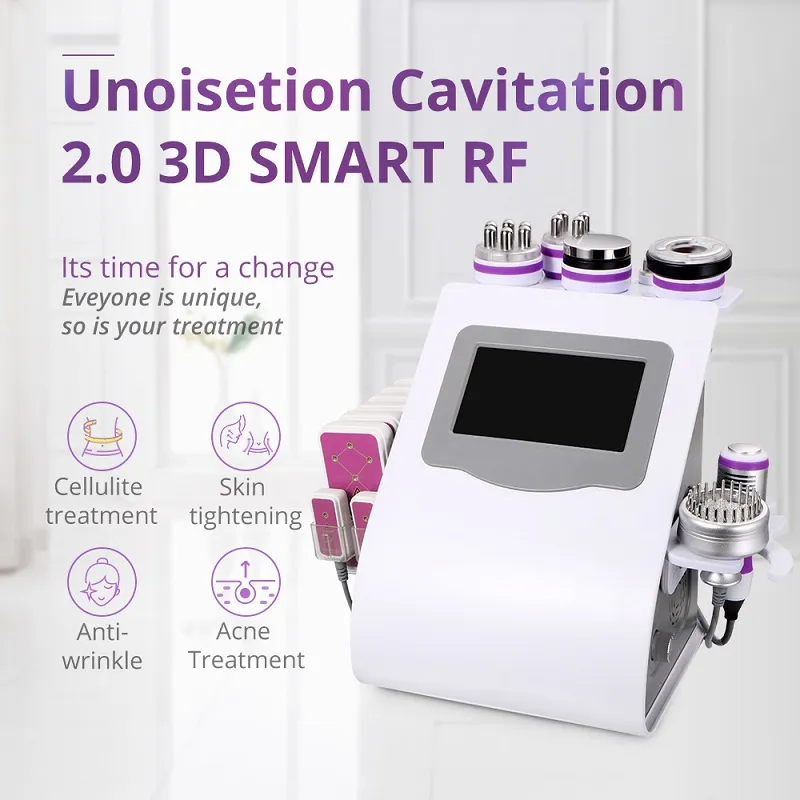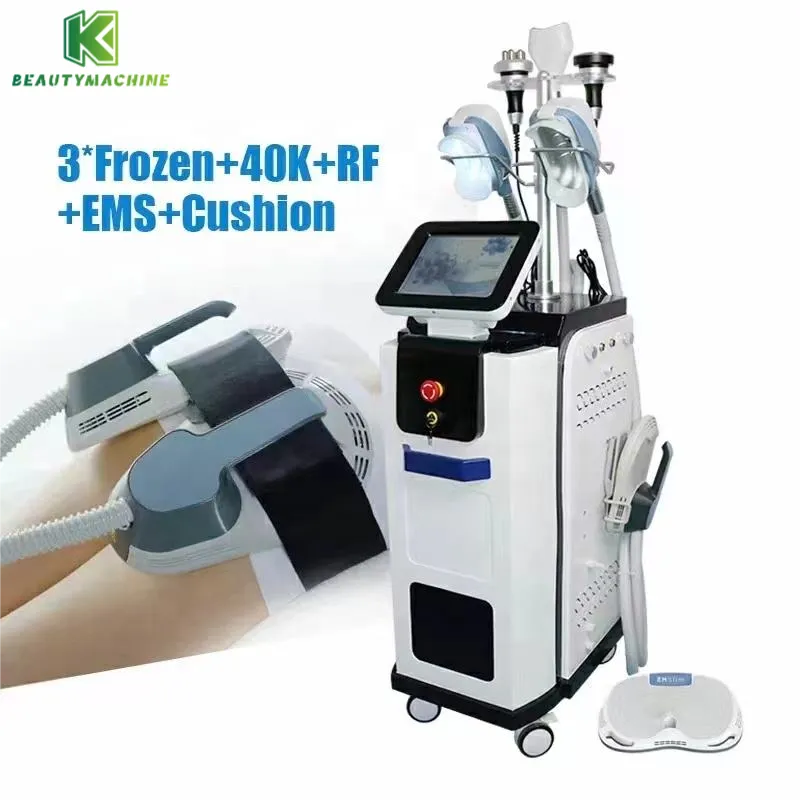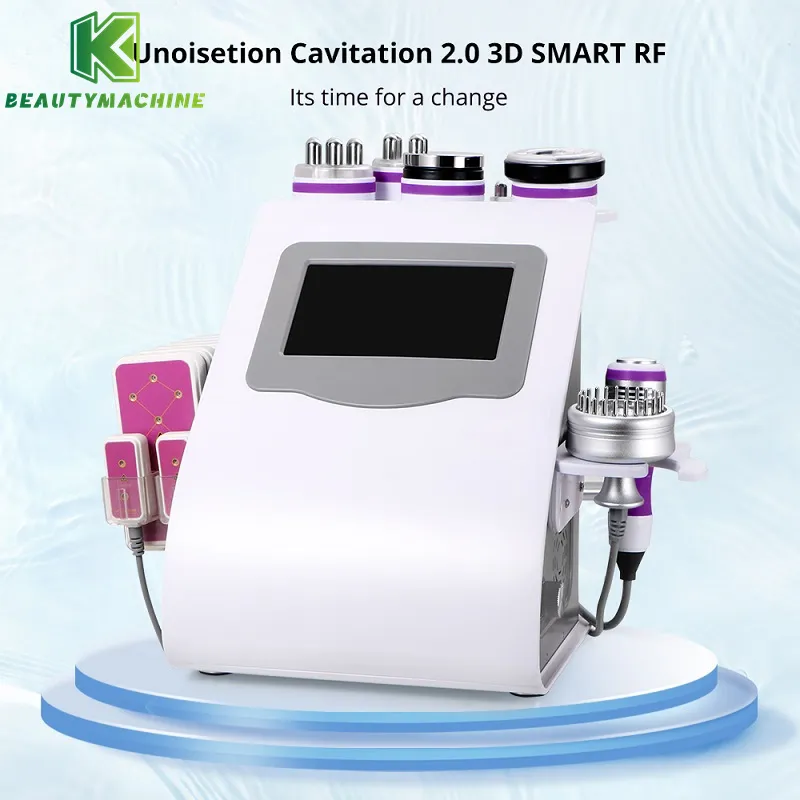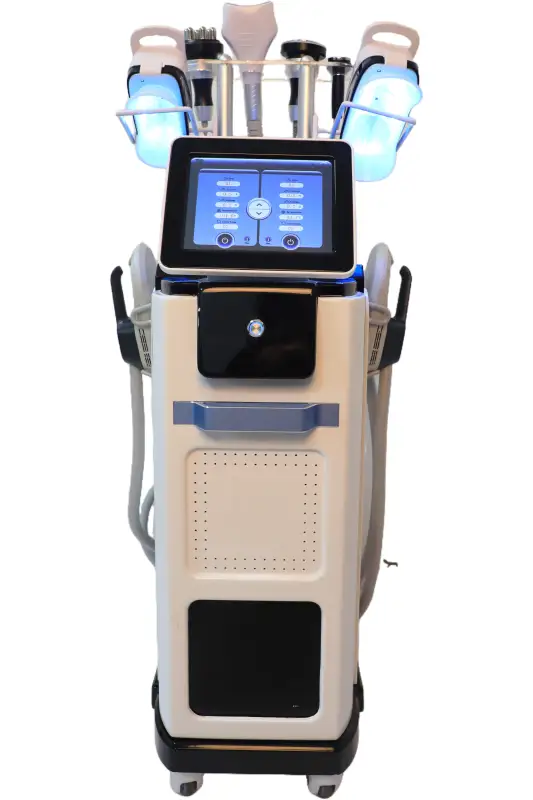
Can cavitation therapy and cryolipolysis be used interchangeably?
2025-10-23 15:30
Among today's non-invasive fat reduction technologies, ultrasonic cavitation machines and cryolipolysis machines are the two most widely used professional devices. Although both are in-vitro lipolysis aesthetic devices, they differ significantly in their mechanisms of action, range of indications, treatment response, and operating techniques.
As more and more users consider the efficiency and alternatives of non-surgical body contouring methods, a core question has emerged: Can cavitation therapy and cryolipolysis be used interchangeably?
To answer this question scientifically, a deep understanding of the underlying principles of each technique, its intended target populations, tissue response mechanisms, and device performance is essential.
The following systematic explanation will provide multiple perspectives to help beauty practitioners and consumers rationally determine whether ultrasonic cavitation machines and cryolipolysis machines can be used interchangeably.

What is cavitation therapy?
Cavitation therapy utilizes high-frequency, low-energy sound waves generated by an ultrasonic cavitation machine to form "cavitation bubbles" within the subcutaneous fat layer. These microbubbles burst in response to pressure fluctuations, disrupting the fat cell membranes and releasing glycerol and fatty acids.
The advantages of cavitation therapy include:
• Non-invasive
• Rapid results
• Effective for mid- and shallow-layer fat
This process does not directly kill fat cells, but rather disrupts their structure, allowing their contents to be expelled through the lymphatic system.
Cavitation therapy works as follows:
• Low-frequency ultrasound (typically 40kHz) is applied to subcutaneous fat;
• Microbubbles are generated within a fluidic cellular environment;
• The rapid collapse of these microbubbles creates localized high pressure, impacting the fat cell membranes;
• This causes fat cells to rupture, releasing glycerol and fatty acids;
• These are then excreted through the lymphatic system.
This technology relies on "physical vibrations" rather than high or low temperatures, so it does not cause thermal damage to surrounding tissues or induce cold stimulation, making it suitable for those seeking rapid fat loss.
What is cryolipolysis?
Cryolipolysis uses a cryolipolysis machine controlled at a temperature between -5°C and -11°C to rapidly cool the fat tissue in the target area. Fat cells, sensitive to low temperatures, undergo programmed cell death (apoptosis), and are then naturally metabolized and absorbed by the body.
Compared to ultrasonic cavitation, cryolipolysis:
• The procedure is more static, resulting in a longer treatment cycle
• The effect takes longer to show (4-8 weeks)
• It is more suitable for one-time volume reduction of thick fat areas
How cryolipolysis works:
• The cryoprobe controls the local tissue temperature between -5°C and +5°C;
• Fat cells are highly sensitive to cold temperatures and undergo apoptosis;
• Surrounding tissues, such as skin, nerves, and muscles, are not damaged due to their high cold tolerance;
• Dead fat cells are gradually engulfed by macrophages;
• They are excreted from the body via the lymphatic system, over a period of weeks to months.
This technique relies on cold stimulation to induce "natural apoptosis," a slow but gentle method for fat reduction that emphasizes safety and gradual progress.

Cavitation and cryolipolysis: A Comparison of Target and Depth
Dimensions | Ultrasonic Cavitation Machine | Cryolipolysis Machine |
| Mechanism of action | High-frequency physical vibration | Temperature-controlled apoptosis-inducing treatment |
| Target tissue | Subcutaneous fat layer | Subcutaneous fat layer |
| Penetration depth | 2.5-5cm (adjustable) | 1-3cm (depending on skin thickness) |
| Adaptable to fat layer thickness | Medium-thick fat area | Slightly thicker fat areas (≥2cm) |
| Treatment cycle | Instant decomposition and metabolic elimination (requires multiple treatments) | A single treatment is effective, with results seen within weeks |
Although both target subcutaneous fat, ultrasonic cavitation machines penetrate deeper and work faster, while cryolipolysis machines treat fat more slowly and more gently, resulting in significant differences in penetration method and rhythm.
Cavitation and Cryolipolysis: A Comparison of Treatment Experiences
1. Ultrasonic Cavitation Machine User Experience
• Mild vibration and warmth are felt during use;
• A "beeping" sound may be heard;
• A small number of users may experience temporary redness, swelling, or tissue distension;
• Daily activities can be resumed immediately after the treatment.
2. Cryolipolysis Machine User Experience
• Initial sensation of intense cold and suction pressure;
• 30-60 minutes of cold exposure;
• Short-term numbness, redness, and tissue stiffness may occur;
• Longer recovery period, but side effects are generally mild.
Conclusion: Cryolipolysis machines are suitable for those with vibration intolerance, while cavitation therapy is suitable for those with cold intolerance. In practice, the two are not interchangeable.

Cavitation and Cryolipolysis: Applicable Areas and Substitution Discussion
Areas | Ultrasonic Cavitation Machine Applicability | Cryolipolysis Machine Applicability | Alternative Conclusions |
| Abdomen | ✅ (Thick Fat) | ✅ (Concentrated Fat) | Interchangeable |
| Thighs | ✅ (Best for External Areas) | ✅ (Fat Areas with Flattened Texture) | Partially interchangeable |
| Arms | ✅ (Combined with Skin Tightening) | ⛔ (Susceptible to Frostbite) | Interchange not recommended |
| Back | ✅ (Extensive Fat) | ✅ (Scapular Fat) | Complementary |
| Face | ⛔ (Not Recommended) | ⛔ (Not Recommended) | Use not recommended for either |
As can be seen, ultrasonic cavitation and cryolipolysis machines are not suitable interchangeably for all areas. Their interchangeability depends on fat distribution, tissue tolerance, and treatment expectations.
Cavitation and Cryolipolysis: Differences in Fat Removal Methods
Contents | Ultrasonic Cavitation Machine | Cryolipolysis Machine |
| Fat excretion mechanism | Instantaneous rupture of fat cells | Slowly apoptosis of fat cells |
| Excretion pathway | Lymphatic system and liver metabolism | Macrophage phagocytosis + lymphatic metabolism |
| Time period | Several days to two weeks | Visible results in 2-3 months |
| Metabolic load | High | Gentle and natural |
Conclusion: Ultrasonic cavitation machines cannot simply replace cryolipolysis machines, especially for people with metabolically sensitive conditions.
Cavitation and Cryolipolysis: Differences in Suitable Populations
Target demographics | Recommended Equipment | Reasons |
| Those who urgently need to improve their figure | Ultrasonic Cavitation Machine | Fast fat-burning and effective treatment |
| Those who are patient and sensitive to reactions | Cryolipolysis Machine | High safety, slow changes |
| Those with weak liver function | Cryolipolysis Machine | Low metabolic stress |
| Those with congestion | Ultrasonic Cavitation Machine | Avoids localized cold reactions |
| Those with a high BMI | Combined Therapy or Cryolipolysis First, Then Cavitation | Multi-layer fat treatment for a more comprehensive effect |
Cavitation and Cryolipolysis: Can They Be Used Interchangeably?
Based on the above analysis, a scientific determination of whether cavitation and cryolipolysis can be used interchangeably must be based on the following:
• Principle Differences: The two methods differ, and there is no one-to-one functional substitution;
• Suitable Patients: Cavitation is suitable for relatively compact areas of fat, while cryolipolysis is suitable for evenly distributed fat;
• Treatment Duration: Cavitation has a rapid onset but requires multiple treatments, while cryolipolysis has a slow effect but a long-lasting effect;
• Human Tolerance: Some users are intolerant to cold or vibration, making interchangeable treatments impossible;
• Metabolic Stress: Cryolipolysis imposes less metabolic stress and is suitable for specific body types.
Therefore, the following conclusions can be drawn:
Cavitation and cryolipolysis have complementary effects in certain areas and populations, but they cannot be used interchangeably. Differentiated choices should be made based on the specific characteristics of the affected area, individual differences, and treatment goals.

Cavitation and cryolipolysis: Can they be used together?
While they cannot be used interchangeably, ultrasonic cavitation and cryolipolysis machines can be combined in a treatment to achieve a more comprehensive weight loss effect:
• Phase 1 (Cryolipolysis): Pre-treats large areas of fat to induce natural cell apoptosis;
• Phase 2 (Ultrasonic Cavitation): Targets residual fat masses and breaks them up to improve metabolic excretion efficiency;
• Phase 3 (Post-treatment Maintenance): Enhances skin firming using devices such as radiofrequency.
This combination approach offers a "gentle yet effective" fat reduction strategy, particularly suitable for those with a higher BMI or inadequate skin elasticity.
Can I buy directly from the KuoHai factory?
Absolutely. KuoHai welcomes direct factory purchasing and bulk orders. Buying directly from the manufacturer in China means you can get low factory prices, volume discounts, and priority production schedules. We provide fast response quotations, support wholesale purchasing, and offer special promotions for long-term partners. Whether you are an online retailer or a distributor, KuoHai ensures every purchase experience is smooth, cost-effective, and transparent.
Get the latest price? We'll respond as soon as possible(within 12 hours)







